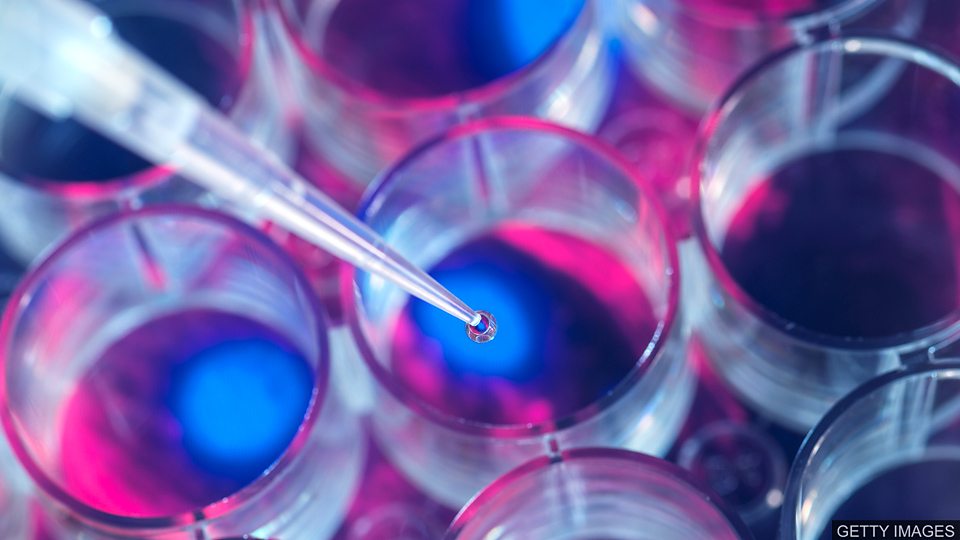美国研究人员表示,猪在死亡一小时后,其器官又恢复了生机,这是一项有望改变医学的突破。
The technology is based around a synthetic fluid. It uses artificial blood to carry oxygen and prevent clots forming. And it contains 13 chemicals to support the body and interfere with the chemical processes that culminate in cells dying.
这项技术基于一种合成液体。它用人造血液来输送氧气,以防止血液凝固。合成液体包含13种化学物质,用来支持身体并干扰以细胞死亡而告终的化学过程。
Pigs were killed in the experiments, and after one hour, the fluid was rhythmically pumped through their blood vessels. You might expect the pig cells, those building blocks of their bodies, to have suffered permanent and devastating damage. However, the study in the journal Nature showed some function was restored – the cells had been partially revived.
猪在实验中死亡,一小时后,合成液体被有节奏地灌注血管中。你可能认为猪体内的细胞,也就是猪身体的基石,遭受了永久性的严重损害。然而,发表在《自然》期刊上的这项研究表明,一些器官组织的功能得到了恢复,细胞部分恢复了活力。
The team at Yale University said they'd managed to persuade cells not to die. There was no sign of consciousness or brain activity in the pigs, and the experiments had ethical approval to take place.
这支耶鲁大学的研究小组说,他们成功地 “说服” 细胞不要死亡。不过,并未在死亡后的猪体内检测到有恢复意识或大脑活动的迹象,同时,实验是在通过伦理审查批准后得以进行的。
The scientific goal is to use the technology to preserve human transplant organs for longer, so they can get to the patients who need them. There are even long-term ambitions to use it as a treatment for people starved of oxygen after drowning or a heart attack. All this will take further research, but the study has already been praised as an incredibly significant moment in medical research.
该实验的科学目标是利用这项技术延长人体移植器官的保存时间,以帮助有需要的病人。长远来看,科学家甚至希望能将其用于治疗溺水或心脏病发作后缺氧的病人。要实现这些目标,都需要进一步的研究,但该研究已被誉为医学研究中一个极为重要的时刻。
词汇表
synthetic 合成的
culminate in 以…告终
rhythmically 有节奏地
devastating 破坏性极大的
consciousness 意识
transplant (器官)移植
阅读理解:请在读完上文后,回答下列问题。
1. In the experiments, what carries oxygen around the bodies?
2. How long after the pigs were killed did the experiments begin?
3. True or false? The cells of the pigs were permanently damaged.
4. What are the scientific and long-term goals of the experiments?
答案
1. In the experiments, what carries oxygen around the bodies?
Artificial blood carries oxygen around the bodies.
2. How long after the pigs were killed did the experiments begin?
The experiments began around one hour after the pigs were killed.
3. True or false? The cells of the pigs were permanently damaged.
False. The study in the journal Nature showed some function was restored – the cells had been partially revived.
4. What are the scientific and long-term goals of the experiments?
The aim is to preserve human transplant organs for longer and one day use it as a treatment for people starved of oxygen after drowning or a heart attack.


 3342次下载
点击下载
3342次下载
点击下载
 2621次下载 点击下载
2621次下载 点击下载
 4734次下载 点击下载
4734次下载 点击下载
 1854次下载 点击下载
1854次下载 点击下载
 1391次下载 点击下载
1391次下载 点击下载
 1391次下载 点击下载
1391次下载 点击下载











